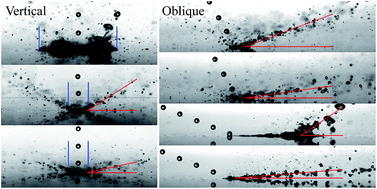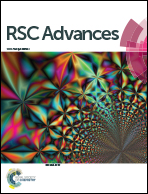The transitions of time-independent spreading diameter and splashing angle when a droplet train impinging onto a hot surface
Abstract
The hydrodynamic patterns of the impingement of a water droplet train on a high temperature substrate are captured with a high-speed camera, and then analyzed. The tested droplets range from 8.8 m s−1 to 18.9 m s−1 in velocity, from 92 μm to 121 μm in diameter and from 28.01 kHz to 56.56 kHz in frequency. Three different orientations of the impact droplet trains are tested. It is found that the hydrodynamic pattern varies significantly with the wall temperature. The time-independent spreading diameter as well as the stable splashing angle reduces with the increase in wall temperature. The two transitions exist in all the experiments with various droplet impact velocities, frequencies or impact angles. Once the splashing is established, the size, the velocity magnitude and the moving direction of splashed secondary droplets obey a bell-shaped distribution. A lower impact velocity renders a wider range of the secondary droplet sizes. The lowest impact velocity case presents outstanding splashing characteristics in the post-transition regime, indicating that an impact velocity of around 10 m s−1 would be a threshold. Those two transitions are not notably influenced by the droplet frequency but significantly affected by the impact angle. The transition of the splashing angle is observed at a lower wall temperature when the droplet train is inclined.


 Please wait while we load your content...
Please wait while we load your content...